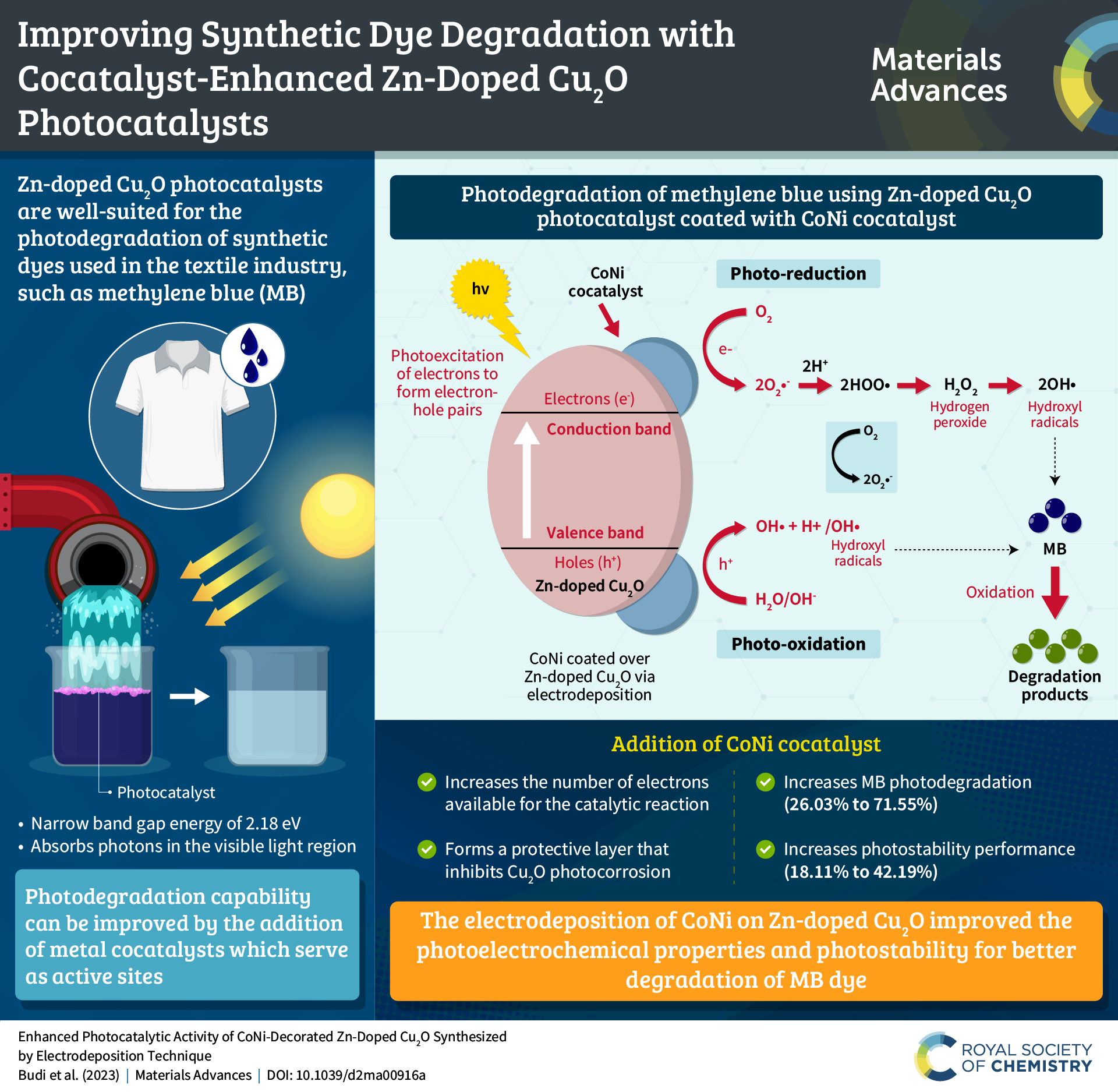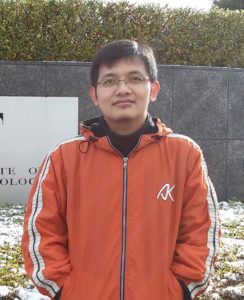To celebrate some of the excellent work that has recently been published in Materials Advances, we asked some of our authors to discuss their work in more detail. In this post, we hear from Setia Budi and his co-authors about their recently published article entitled “Enhanced photocatalytic activity of CoNi-decorated Zn-doped Cu2O synthesized by electrodeposition technique“.
Meet the authors
Setia Budi received his Ph.D. in materials Science from Universitas Indonesia in 2017. While pursuing his Ph.D., he conducted research at the School of Materials Science, Japan Advanced Institute of Science and Technology (JAIST) through a sandwich-like program. Currently, he serves as a lecturer in the Department of Chemistry at Universitas Negeri Jakarta, where he leads a research group specializing in the synthesis of nanostructured films for electrocatalyst, photocatalysts, and bio-applications. His research is dedicated to uncovering strategies for enhancing the performance and durability of these films.
Mega Gladiani Sutrisno graduated in chemistry from the Universitas Negeri Jakarta in Indonesia. In 2021 she began her independent career as an Assistant Researcher at The Centre of Innovation, where she worked on the synthesis and catalytic activity characterization of cuprous oxide doped semiconductor nanomaterials. Currently she is working to elucidate the improved photocatalytic activity and stability and semiconductor materials for photodegradation of synthetic dyes.
An interview with the authors
What aspect of your work are you most excited about at the moment and what do you find most challenging about your research?
I am currently most excited about the remarkable advancements in nanostructured films for photocatalysts, electrocatalysts, and bio-applications. However, my research’s primary challenge is to boost the catalytic activity and longevity of these films.
How do you feel about Materials Advances as a place to publish research on this topic?
I view Materials Advances as an excellent platform for publishing our research on this topic due to its focus on materials science and its potential to reach a broad audience of researchers and professionals in the field.
Can you share one piece of career-related advice or wisdom for early career scientists?
As an earlier scientist, I may not have profound wisdom to offer. Nevertheless, I’d like to share a valuable piece of advice: stay curious, persistent, and open to collaboration.













